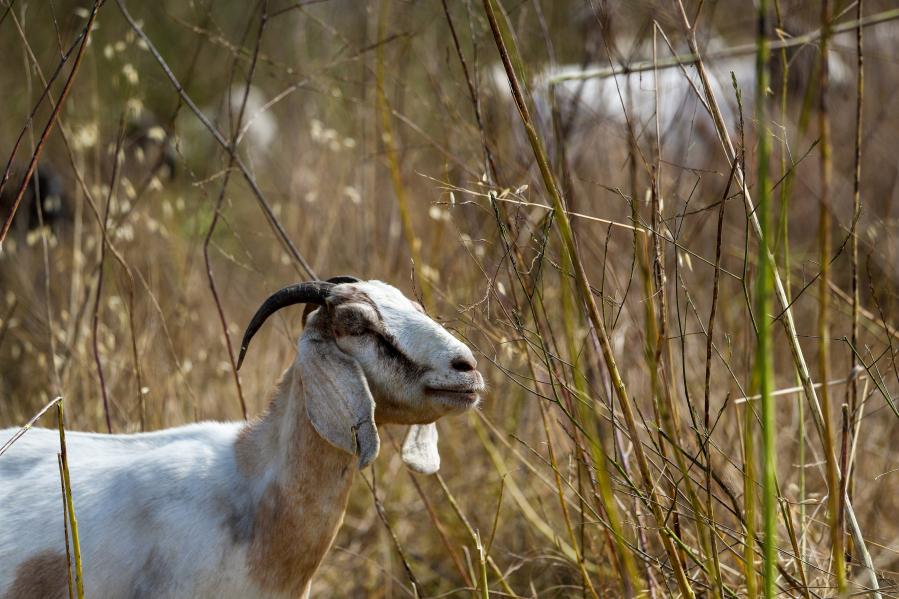When it comes to wildfire control, you’ve gotta love goats.
Machines may be cheaper at clearing open spaces by tilling flammable weeds — and all their seeds — into the ground, but they’re also noisy and polluting, damaging soil structure and the beneficial bugs and organisms that dwell underground.
Goats, on the other hand, are relatively quiet — save the occasional bleating and bell tinkling — and can easily access steep hills and canyons that machines would not be able to manage, said Cris Sarabia, conservation director of the Palos Verdes Peninsula Land Conservancy.
They’re also voracious and highly efficient at eating almost every plant and seed in their path, leaving only a crunchy mulch of stripped stems and piles of natural fertilizer — poop — that enrich the soil, an important consideration when, like Sarabia, you’re in the business of habitat restoration.
Goats are just about the best when it comes to clearing large swaths of weeds on steep terrain, said Michael Choi, co-owner of the Mariposa-based herding company Fire Grazers Inc. Sheep are pickier eaters, he said, “and if you tried to put a cow in this canyon, it might start rolling down the hill. Goats are natural mountaineers.”



